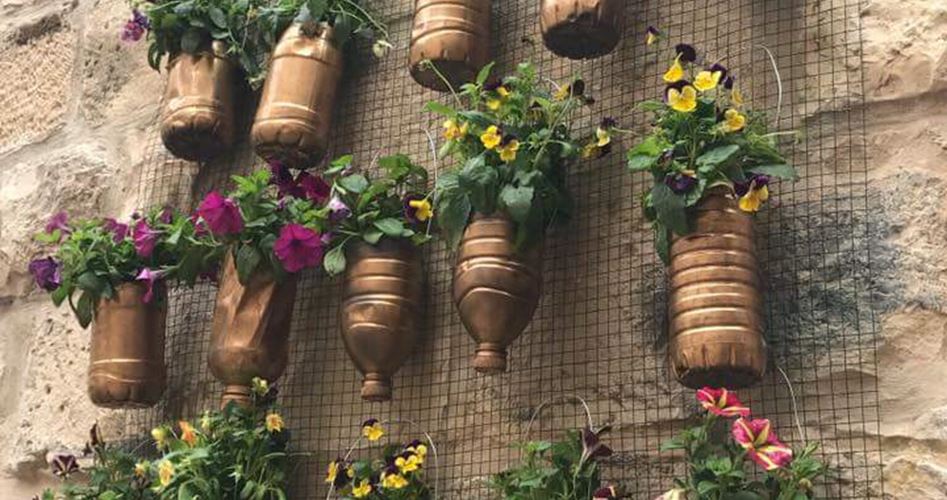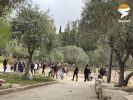As the Judaization of the city of Jerusalem is taking place young Jerusalemites believe in the need to spread hope in the hearts of Jerusalemites by decorating the alleys of the Old City which suffers from neglect by the Israeli-run municipality.
This initiative called a ‘Glimpse of Hope’ was initiated by ‘Seed of Goodness’ youth group which is part of Khati project a charitable initiative which has to do with getting young men and women volunteer to decorate the alleys of the Old City.
The project’s organizers said the idea of the project was taken from a comment by a British tourist who toured the Old City. He noted that the walls were distorted by black smoke caused by fire and random graffiti as well as the accumulation of waste in front of the entrances of some of the houses as well as the lack of lightening in its streets which makes tourists visiting the area feel uncomfortable.
Nada Abdeen adds to the PIC that the initiative focuses on creating a variety of green spaces and alleyways that add to the Old City’s more aesthetics and attractiveness and give its residents and visitors an opportunity to enjoy the architectural heritage throughout the Old City which will benefit the tourist and commercial sector there. This will also help support the resilience and strengthen the role of youth to do voluntary work and develop their sense of responsibility.
She points out that the team chose Bab Hitta Street to implement the initiative due to the presence of houses with Mamluk and Ottoman architecture and because it is one of the main roads leading to Al-Aqsa Mosque and because it is full of life and people especially on Fridays.
Mayson Sweilem told the PIC that this initiative was launched in cooperation with the Burj Al-Laqlaq Society and the Ruaya Foundation and is based on the reuse of water bottles and vehicle tires in creative ways that serve the purpose of highlighting the beauty of Jerusalem’s Old City neighborhoods. The step is an important contribution to the environment and it provides psychological comfort to the population and tourists.
She adds that the local people collaborated with us and accepted the idea and supported it and that one of the local women chose Bab Hitta Street because its residents are collaborative “which encouraged us to implement the project.”
“The project started with workshops targeting children who helped us in the process of decoration. We asked the locals to maintain the aesthetic nature of the neighborhood.”
She points out that the support received on Bab Hitta Street encouraged us to do the same thing in other streets in the Old City which will be preceded by studying the next project before implementing it.
The message from this project as the architects of the project say is that the youths of Jerusalem are creative and educated and could give in spite of the difficult circumstances they go through.











